Filter by
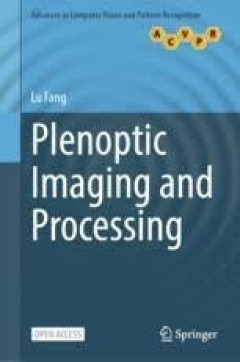
Plenoptic Imaging and Processing
This open access book delves into the fundamental principles and cutting-edge techniques of plenoptic imaging and processing. Derived from the Latin words "plenus" (meaning "full") and "optic," plenoptic imaging offers a transformative approach to optical imaging. Unlike conventional systems that rely solely on the pinhole camera model to capture spatial information, plenoptic imaging aims to d…
- Edition
- 1
- ISBN/ISSN
- 9789819769155
- Collation
- XIII, 389
- Series Title
- -
- Call Number
- -

Spatio-temporal Image Analysis for Longitudinal and Time-Series Image Data: T…
This book constitutes the thoroughly refereed post-conference proceedings of the Third International Workshop on Spatio-temporal Image Analysis for Longitudinal and Time-Series Image Data, STIA 2014, held in conjunction with MICCAI 2014 in Boston, MA, USA, in September 2014. The 7 papers presented in this volume were carefully reviewed and selected from 15 submissions. They are organized in …
- Edition
- -
- ISBN/ISSN
- 978-3-319-14905-9
- Collation
- -
- Series Title
- -
- Call Number
- -

Here/there :telepresence, touch, and art at the interface
An examination of telepresence technologies through the lens of contemporary artistic experiments, from early video art through current ""drone vision"" works.OCLC-licensed vendor bibliographic record.
- Edition
- -
- ISBN/ISSN
- 9780262338240
- Collation
- 1 online resource (xiii, 250 pages) :illustrations.
- Series Title
- -
- Call Number
- -

Augmented Reality for Engineering Graphics
This open access book offers a timely snapshot of Augmented Reality (AR) technology, with an emphasis on its application within the mechanical and manufacturing engineering domains, for both educational and industrial purposes. Reporting on the experience of the authors, the book introduces readers to the principles of product design, with an emphasis on modern strategies and approaches for use…
- Edition
- -
- ISBN/ISSN
- 978-3-031-44640-5
- Collation
- XIII, 89
- Series Title
- -
- Call Number
- -
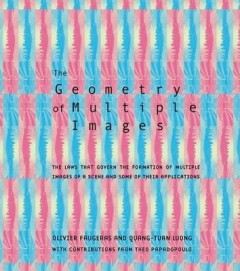
The geometry of multiple images : the laws that govern the formation of multi…
This book formalizes and analyzes the relations between multiple views of a scene from the perspective of various types of geometries. A key feature is that it considers Euclidean and affine geometries as special cases of projective geometry.Over the last forty years, researchers have made great strides in elucidating the laws of image formation, processing, and understanding by animals, humans…
- Edition
- -
- ISBN/ISSN
- 9780262272513
- Collation
- 1 online resource (xxiv, 644 pages) :illustrations
- Series Title
- -
- Call Number
- 006 FAU g

Vision: A computational investigation into the human representation and proce…
"David Marr's posthumously published Vision (1982) influenced a generation of brain and cognitive scientists, inspiring many to enter the field. In Vision, Marr describes a general framework for understanding visual perception and touches on broader questions about how the brain and its functions can be studied and understood. Researchers from a range of brain and cognitive sciences have long v…
- Edition
- -
- ISBN/ISSN
- 9780262289610
- Collation
- 1 online resource (xxiii, 403 pages) :illustrations
- Series Title
- -
- Call Number
- -

Distributed Work
Multidisciplinary research on dynamics, problems, and potential of distributed work.
- Edition
- -
- ISBN/ISSN
- 9780262256353
- Collation
- -
- Series Title
- -
- Call Number
- -
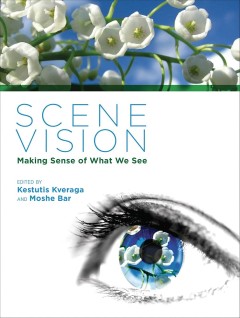
Scene Vision: Making Sense of What We See
Cutting-edge research on the visual cognition of scenes, covering issues that include spatial vision, context, emotion, attention, memory, and neural mechanisms underlying scene representation.OCLC-licensed vendor bibliographic record.
- Edition
- -
- ISBN/ISSN
- 9780262319898
- Collation
- 1 online resource :illustrations
- Series Title
- -
- Call Number
- -
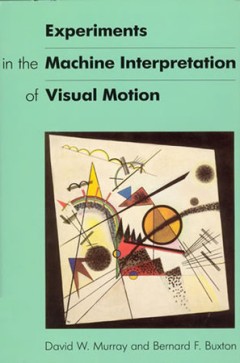
Experiments in the machine interpretation of visual motion
If robots are to act intelligently in everyday environments, they must have a perception of motion and its consequences. This book describes experimental advances made in the interpretation of visual motion over the last few years that have moved researchers closer to emulating the way in which we recover information about the surrounding world. It describes algorithms that form a complete, imp…
- Edition
- -
- ISBN/ISSN
- 9780262280372
- Collation
- 1 online resource (236 pages) :illustrations.
- Series Title
- -
- Call Number
- -
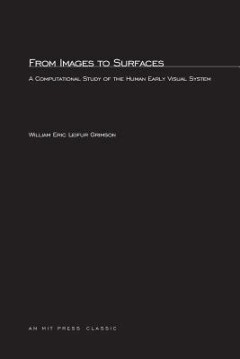
From Images to Surfaces: A Computational Study of the Human Early Visual System
Based on the author's thesis (Ph. D.--Massachusetts Institute of Technology).Includes indexes.The projection of light rays onto the retina of the eye forms a two-dimensional image, but through combining the stereoscopic aspect of vision with other optical clues by means of some remarkably effective image-processing procedures, the viewer is able to perceive three-dimensional representations of …
- Edition
- -
- ISBN/ISSN
- 9780262256278
- Collation
- 1 online resource (274 pages) :illustrations.
- Series Title
- -
- Call Number
- -
 Computer Science, Information & General Works
Computer Science, Information & General Works  Philosophy & Psychology
Philosophy & Psychology  Religion
Religion  Social Sciences
Social Sciences  Language
Language  Pure Science
Pure Science  Applied Sciences
Applied Sciences  Art & Recreation
Art & Recreation  Literature
Literature  History & Geography
History & Geography